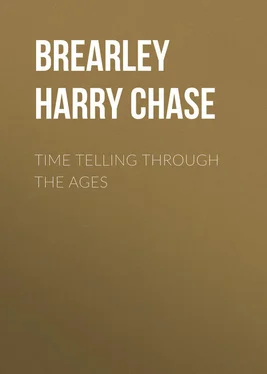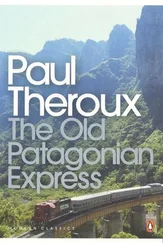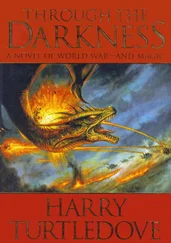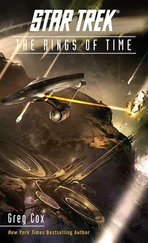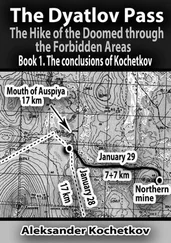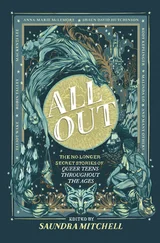Harry Brearley - Time Telling through the Ages
Здесь есть возможность читать онлайн «Harry Brearley - Time Telling through the Ages» — ознакомительный отрывок электронной книги совершенно бесплатно, а после прочтения отрывка купить полную версию. В некоторых случаях можно слушать аудио, скачать через торрент в формате fb2 и присутствует краткое содержание. Жанр: foreign_antique, foreign_prose, на английском языке. Описание произведения, (предисловие) а так же отзывы посетителей доступны на портале библиотеки ЛибКат.
- Название:Time Telling through the Ages
- Автор:
- Жанр:
- Год:неизвестен
- ISBN:нет данных
- Рейтинг книги:4 / 5. Голосов: 1
-
Избранное:Добавить в избранное
- Отзывы:
-
Ваша оценка:
- 80
- 1
- 2
- 3
- 4
- 5
Time Telling through the Ages: краткое содержание, описание и аннотация
Предлагаем к чтению аннотацию, описание, краткое содержание или предисловие (зависит от того, что написал сам автор книги «Time Telling through the Ages»). Если вы не нашли необходимую информацию о книге — напишите в комментариях, мы постараемся отыскать её.
Time Telling through the Ages — читать онлайн ознакомительный отрывок
Ниже представлен текст книги, разбитый по страницам. Система сохранения места последней прочитанной страницы, позволяет с удобством читать онлайн бесплатно книгу «Time Telling through the Ages», без необходимости каждый раз заново искать на чём Вы остановились. Поставьте закладку, и сможете в любой момент перейти на страницу, на которой закончили чтение.
Интервал:
Закладка:
Harry Chase Brearley
Time Telling through the Ages
PREFACE
In the midst of the world war, when ordinary forms of celebration seemed unsuitable, this book was conceived by Robt. H. Ingersoll & Bro., as a fitting memento of the Twenty-fifth Anniversary of their entrance into the watch industry, and is offered as a contribution to horological art and science. Its publication was deferred until after the signing of the peace covenant.
The research work for fact material was performed with devoted fidelity and discrimination by Mrs. Katherine Morrissey Dodge, who consulted libraries, trade publications, horological schools and authorities in leading watch companies. The following were helpfully kind to her: New York Public Library, New York City; The Congressional Library, Washington, D. C.; Newark Public Library, Newark, New Jersey; The Jewelers' Circular, New York City; Keystone Publishing Company, Philadelphia, Pennsylvania; Mr. John J. Bowman, Lancaster, Pennsylvania; Major Paul M. Chamberlain, Chicago, Illinois; Hamilton Watch Company, Lancaster, Pennsylvania; Mr. Henry G. Abbott, of the Calculagraph Company, New York City, and others .
Credit is also due to Mr. Walter D. Teague, the well-known artist of New York City, who acted as art editor and supervised the preparation of illustrations, typography and other art and mechanical features .
The photographic compositions are the result of the enthusiasm, the understanding and the art of Mr. Lejaren a' Hiller, of New York City. In this connection the courtesy of Mr. Henry W. Kent, Secretary of the Metropolitan Museum of Art, New York City, in permitting the use of collections of the museum in the preparation of illustrations, is appreciated.
Harry C. BrearleyFOREWORD
It was a moonless night in No Man's Land. A man in khaki stood silently waiting in a frontline trench. In the darkness, his eyes were drawn, fascinated, to the luminous figures on the watch-dial at his wrist. A splinter of pale light, which he knew to be the hour-hand, rested upon the figure 11. A somewhat longer splinter crept steadily from the figure 12.
"Past eleven," he whispered to himself. "Less than twenty minutes now."
To the right and to the left of him, he, now and then, could see his waiting comrades in the blackness of the trench, their outlines vaguely appearing and disappearing with the intermittent flares of distant star-shells. He knew that they, too, were intent upon tiny figures in small luminous circles and upon the steady, relentless progress of other gleaming minute-hands which moved in absolute unison with the one upon his own wrist. He knew, also, that far in the rear, clustered about their guns, were other comrades tensely counting off the passing minutes.
At twenty minutes past eleven, the artillery bombardment would begin and would continue until exactly midnight. Then would come the barrage – the protecting curtain of bursting shells behind which the khaki-clad figure and his companions would advance upon the enemy's trenches – perhaps also upon eternity.
How strangely silent it seemed after the crashing chaos of the last few days! There were moments when the rumble of distant guns almost died away, and he could hear the faint ticking of his timepiece or a whispered word out of the darkness near at hand. He likened the silence to the lull before a storm.
Five minutes thus went by!
In another fifteen minutes, the fury of the bombardment would begin; it would doubtless draw an equally furious bombardment from the enemy's guns.
At twelve-ten plus forty-five seconds, he and his platoon were to "go over the top" and plunge into the inferno of No Man's Land. That was the moment set for the advance – the moment when the barrage would lift and move forward.
The slender hand on the glowing dial stole steadily onward. It was ten minutes after now.
Ten minutes after eleven – just one hour plus forty-five seconds to wait! His thoughts flew back to his home in the great city beyond the sea.
Ten minutes after eleven – why that would be only ten minutes after six in New York! How plainly he could picture the familiar scenes of rushing, bustling life back there! Crowds were now pouring into the subways and surface cars or climbing to the level of the "L's." This was the third – the latest homeward wave. The five o'clock people had, for the most part, already reached their homes and were thinking about their dinner; the five-thirties were well upon their way.
How the millions of his native city and of other cities and towns, and even of the country districts, all moved upon schedule! Clocks and watches told them when to get up, when to eat their breakfasts, when to catch their trains, reach their work, eat their lunches, and return to their homes. Newspapers came out at certain hours; mails were delivered at definite moments; stores and mills and factories all began their work at specified times.
What a tremendous activity there was, back there in America, and how smoothly it all ran – smooth as clock-work! Why, you might almost say it ran by clock-work! The millions of watches in millions of pockets, the millions of clocks on millions of walls, all running steadily together – these were what kept the complicated machinery of modern life from getting tangled and confused.
Yes; but what did people do before they had such timepieces? Back in the very beginning, before they had invented or manufactured anything – far back in the days of the caveman – even those people must have had some method of telling time.
A bright star drew above the shadowy outline of a hill. At first the man in khaki thought that it might be a distant star-shell; but no, it was too steady and too still. Ah yes, the stars were there, even in the very beginning – and the moon and the sun, they were as regular then as now; perhaps these were the timepieces of his earliest ancestors.
A slight rustle of anticipation stirred through the waiting line and his thoughts flashed back to the present. His eyes fixed themselves again on the ghostly splinters of light at his wrist. The long hand had almost reached the figure 4 – the moment when the bombardment would begin.
He and his comrades braced themselves – and the night was shattered by the crash of artillery.
CHAPTER ONE
The Man Animal and Nature's Timepieces
The story of the watch that you hold in your hand to-day began countless centuries ago, and is as long as the history of the human race. When our earliest ancestors, living in caves, noted the regular succession of day and night, and saw how the shadows changed regularly in length and direction as day grew on toward night, then was the first, faint, feeble germ of the beginning of time-reckoning and time-measurement. The world was very, very young, so far as man was concerned, when there occurred some such scene as this:
It is early morning. The soft, red sandstone cliffs are bathed in the golden glow of dawn. As the great sun climbs higher in the eastern sky, the sharply outlined shadow of the opposite cliff descends slowly along the western wall of the narrow canyon. A shaggy head appears from an opening, half-way up the cliff, and is followed by the grotesque, stooping figure of a long-armed man, hairy and nearly naked, save for a girdle of skins. He grasps a short, thick stick, to one end of which a sharpened stone has been bound by many crossing thongs, and, without a word, he makes his way down among the bushes and stones toward the bed of the creek.
Another head appears at the same opening in the cliff – that of a brown-skinned woman with high cheek-bones, a flat nose, and tangled hair. She shouts after the retreating form of the man, and he stops, and turns abruptly. Then he points to the edge of the shadow far above his, and, with a sweeping gesture, indicates a large angular rock lying in the bed of the stream near by. Apparently understanding the woman nods and the man soon disappears into the brush.
Читать дальшеИнтервал:
Закладка:
Похожие книги на «Time Telling through the Ages»
Представляем Вашему вниманию похожие книги на «Time Telling through the Ages» списком для выбора. Мы отобрали схожую по названию и смыслу литературу в надежде предоставить читателям больше вариантов отыскать новые, интересные, ещё непрочитанные произведения.
Обсуждение, отзывы о книге «Time Telling through the Ages» и просто собственные мнения читателей. Оставьте ваши комментарии, напишите, что Вы думаете о произведении, его смысле или главных героях. Укажите что конкретно понравилось, а что нет, и почему Вы так считаете.
